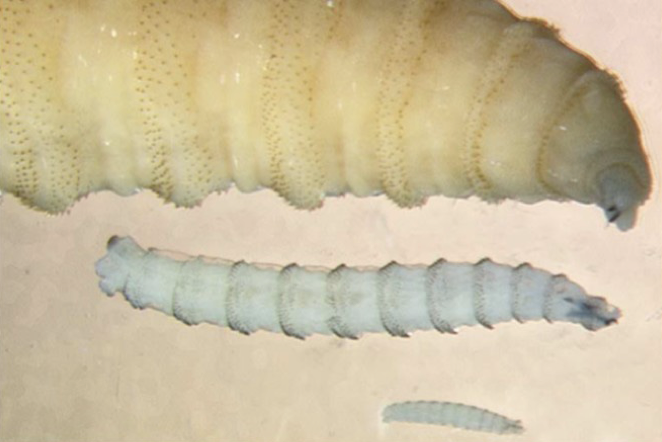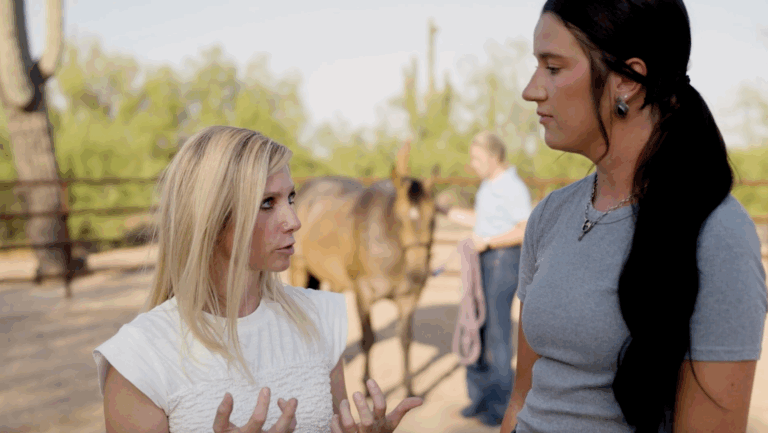
The New World screwworm (NWS) fly, Cochliomyia hominivorax, was eradicated from the United States in 1966. Prior to eradication, it cost the U.S. livestock industry more than $100 million annually.
In 2023, increased cases of screwworm infestation were noted in Central America and began advancing north. In February 2025, the first cases were identified in southern Mexico. Since then, more cases have been identified further north, creating a concern to the U.S., especially for border states such as Texas and New Mexico. Unfortunately, with the increase in international travel, this pest can hitch a ride into the U.S. and become established before it can be stopped.
New World Screwworm Characteristics

An adult screwworm fly is up to 10 millimeters long. Its body is metallic blue, bluish purple, or blue-green, and its eyes are large and red in color. The fly does not bite; the harm comes when the female lays eggs near an open wound and the larvae infest the wound. An adult fly only survives for about two weeks, but she is sexually mature within two to three days after developing into an adult. Once fertilized by a male, she is capable of laying egg masses several times during her lifetime near open wounds. These egg masses contain 100 to 300 eggs, which develop into larvae within 10 to 12 hours and then feed on live tissue.
The female NWS fly only mates once in her lifetime. Therefore, one control method is to release sterilized male flies to breed the females, which are then unable to lay viable eggs. The U.S. and other countries have previously used this method to eradicate NWS flies.
The larvae go through three stages and grow larger with each stage. The larvae can survive and eat live tissue for up to seven days. The head of the third-stage (instar) larva has hooks on it, which enables it to tear at the host tissues during feeding. It also has barbs on its sides that allow it to secure its position within a wound. “Myiasis” describes a wound that is infested with fly larvae. When these larvae develop into third-stage larvae, they exit the wound, burrow into the soil, and develop into pupa. Pupa can develop into adults or hibernate within the soil until conditions are more conducive for developing into adult flies.
Horses can become infected with the larvae through any break in the skin (trauma, horse fly, tick bite, etc.) or at their mucous membranes (eyes, vulva, prepuce, etc.). Therefore, it is essential for horse owners to use fly protection and observe their horses diligently. If they observe any suspicious lesions, they should contact their veterinarian, State Animal Health Official, or USDA Area Veterinarian in Charge immediately.
Identification/Notification

If an animal infected by NWS is left untreated, it can die within one week due to secondary infections. Animals identified with myiasis should receive veterinary care. Larvae within the wound should be collected and submitted for identification.
If you observe an animal with myiasis, collect the larvae from the lesion, place in a sterile container with 70% ethanol or alcohol, and send to the nearest National Animal Health Labatory Network (NAHLN) lab for diagnosis. Do not place the larvae in formalin.
The link for the parasite submission form is available here.
Treatment
Clean and debride the wound and apply permethrin spray. You can administer Ivomec injectable to livestock as treatment. Topical permethrins can also be used in horses and other livestock to assist with fly control.
Eradication Techniques
The only proven technique for eradicating NWS flies is to release sterilized male screwworm flies to mate with females. This technique was successful in the U.S. in the 1960s.
Related Reading
- Equine, Livestock Imports Suspended Along Southern Border as NWS Spreads North
- Disease Du Jour: Equine Infectious Disease Patterns and Threats
- Positive Detection of Screwworm in Mexico Poses Potential Threat to U.S. Equine Population
Stay in the know! Sign up for EquiManagement’s FREE weekly newsletters to get the latest equine research, disease alerts, and vet practice updates delivered straight to your inbox.




